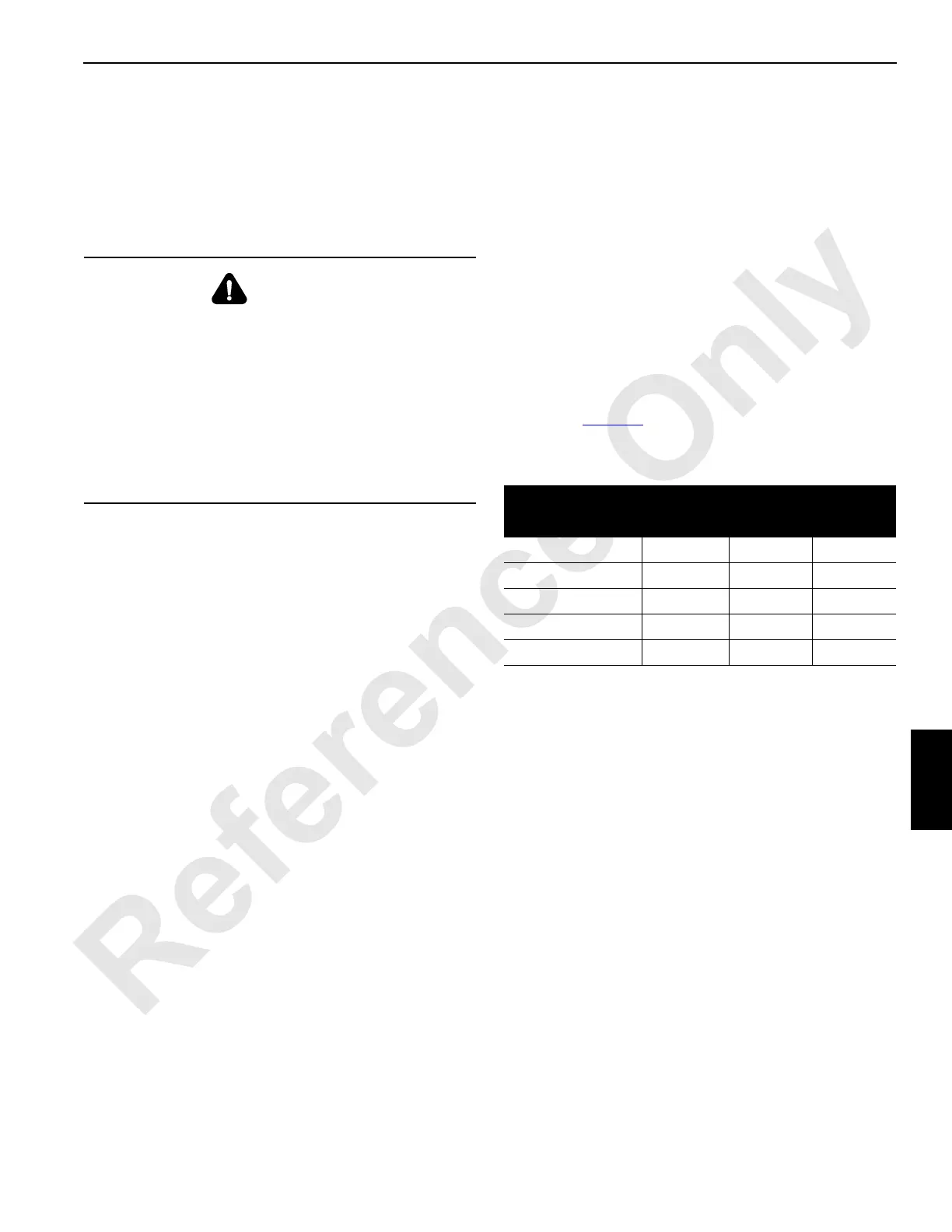Manitowoc Published 07-19-16, Control # 249-01 7-1
2250 SERVICE/MAINTENANCE MANUAL POWER TRAIN
SECTION 7
POWER TRAIN
BATTERY MAINTENANCE
Safety Information
Batteries produce a byproduct of highly flammable hydrogen
gas when producing electricity and elevated levels while
being charged. Do not disturb the connection between the
batteries until the charger is off.
Do not reverse the connection between the batteries and the
charging equipment or an explosion may occur. This hazard
is present with all types of chargers, but particularly in the
case of high-rate equipment. Carefully check the
connections before turning the charger on.
Improper use of a “booster” battery to start a crane when the
normal battery is inadequate presents a definite explosion
hazard. To minimize this hazard, the following procedure is
suggested.
1. Connect both jumper cables to the battery on the crane
to be started. Do not allow the opposite ends of the
cables to touch.
2. Connect the positive cable to the positive terminal of the
booster battery.
3. Connect the negative cable to the frame or engine block
of the starting vehicle. Never connect it to the grounded
terminal of the starting vehicle.
If the electrolyte comes in contact with eyes, skin, or clothing,
flush the area immediately with large amounts of water. Seek
first aid if discomfort continues.
Causes of Battery Failure
Overcharging
Overcharging is the number one cause of battery failure and
is most often caused by a malfunctioning voltage regulator.
Excessive heat is the result of overcharging. Overheating
causes the plates to warp, which can damage separators
and cause a short circuit within a cell. This resultant bubbling
and gassing of the electrolyte can wash the active material
from the plates, reducing the battery’s capacity or causing an
internal short.
Undercharging
Undercharging can cause a type of sulfate to develop on the
plates. The sulfate causes strains in the positive plates,
which results in plate buckling. Buckled plates can pinch the
separators and cause a short circuit. An undercharged
battery not only is unable to deliver power, but also may
freeze. See Table 7-1
for the following.
Table 7-1. Battery Freeze Points
The sulfate condition can eventually be converted to metallic
lead, which can short the positive and negative plates. These
small shorts can cause low cell voltage when the battery is
charged.
Lack of Water
The plates must be completely covered. If the plates are
exposed, the resultant high acid concentration will char and
disintegrate the separators. The plates cannot take a full
charge if not completely covered by electrolyte.
Hold-Downs
Loose hold-downs allow the battery to vibrate in the holder.
This can cause cracks or wear in the container and cause
acid to leak. Leaking acid corrodes the terminals and cables,
resulting in high-resistance battery connections. This
weakens the power of the battery. Overtightened hold-downs
can distort or crack the container and cause the same
problem.
Overloads
Avoid prolonged cranking or the addition of extra electrical
devices, which drain the battery and may cause excessive
heat.
WARNING
Explosion Hazard!
Prevent personal injury. Batteries can explode and spray
acid with great violence.
Avoid sparks or flames while charging the batteries.
Do not smoke while performing battery maintenance.
Do not short across the battery terminals to check for
charge.
Store batteries in a ventilated area away from flames or
sparks.
State of Charge
Specific
Gravity
Freeze Point
°C °F
100% 1.26 -57 -70
75% 1.23 -38 -39
50% 1.20 -26 -16
25% 1.17 -19 -2
Discharged 1.11 -8 +17

